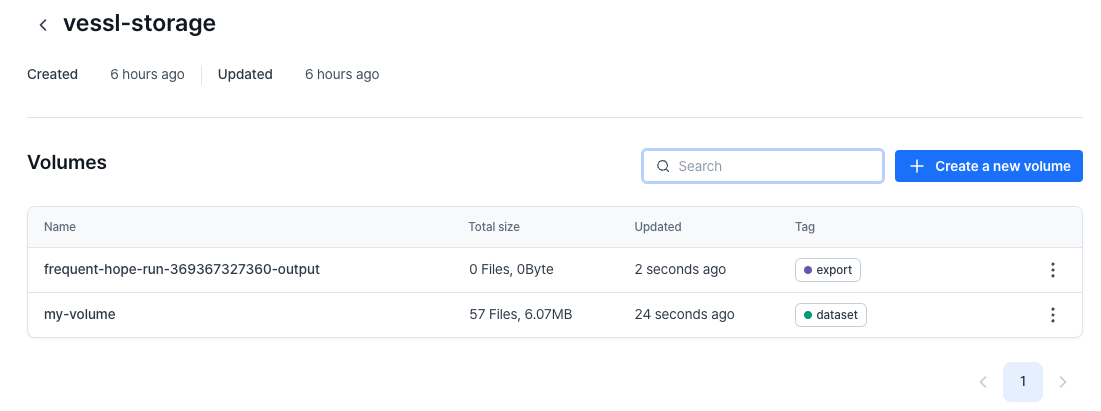Creating a volume in VESSL Storage
Volume is the basic storage unit in VESSL. There are two ways to create a volume, each optimized for different machine learning workflow scenarios.In YAML, a volume in VESSL Storage is specified as
volume://vessl-storage/{volume-name}. 1. User-generated volume
Users can create volumes to upload datasets or models that will be used in workloads.1
Create a new volume
Navigate to Storage > VESSL Storage and click the 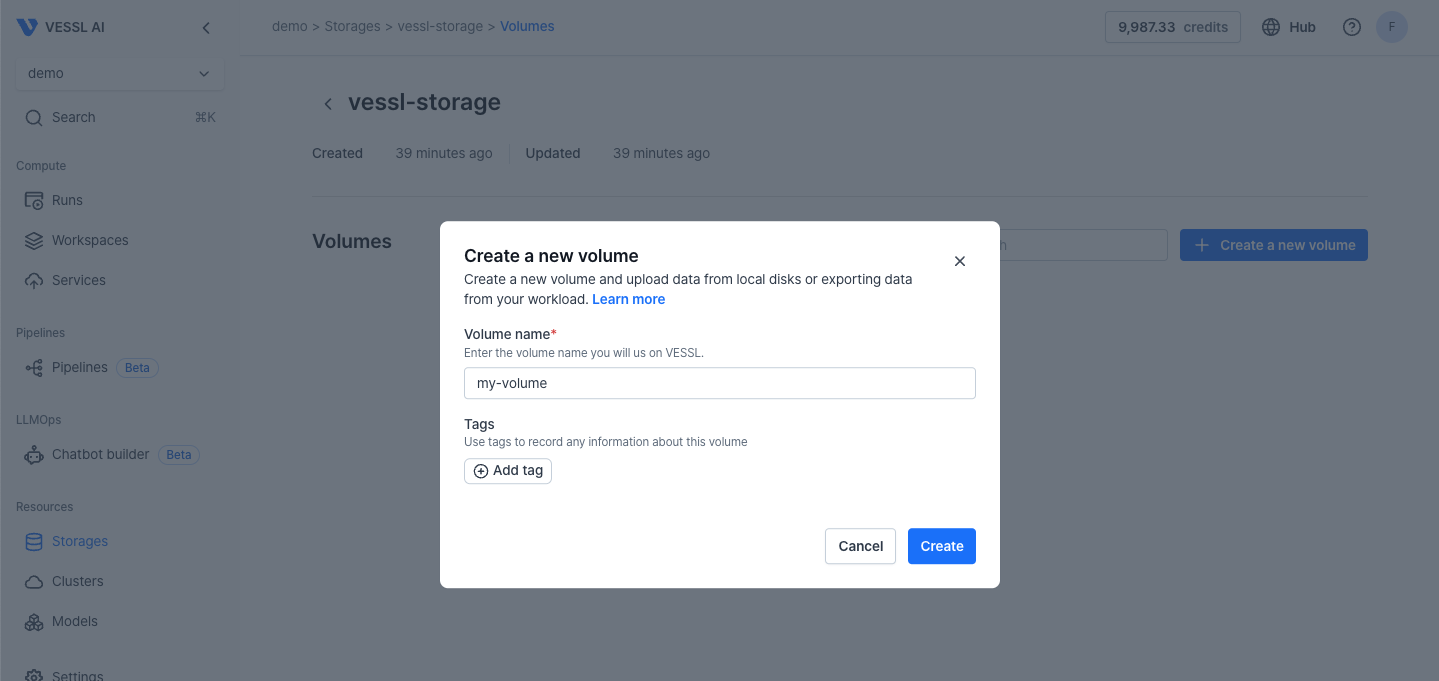
+ Create a new volume button. Specify the volume name and click the Create button.
2
Upload files to the volume
Click the 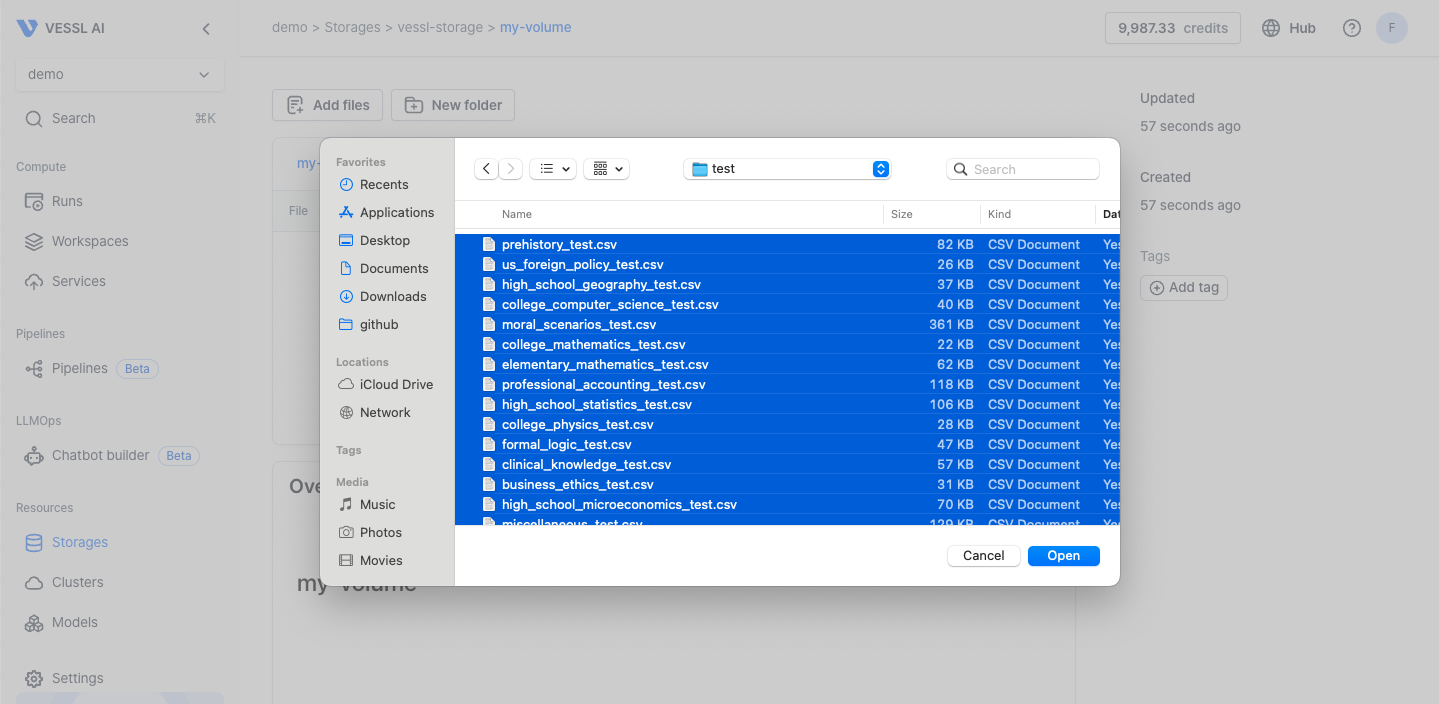
Add files button in the volume and select the files in your local machine to upload.
3
Import the volume to a run
When creating a run in the web console, create a new directory (e.g., 
/dataset), and import the volume of VESSL Storage as shown below.
2. Workload-generated volume
Volumes can also be created by a workload when exporting logs, checkpoints, and metrics to VESSL Storage. The volume name is automatically generated in this case.1
Export a workload volume to storage
To export your workload’s data to VESSL Storage, create a new directory (e.g., 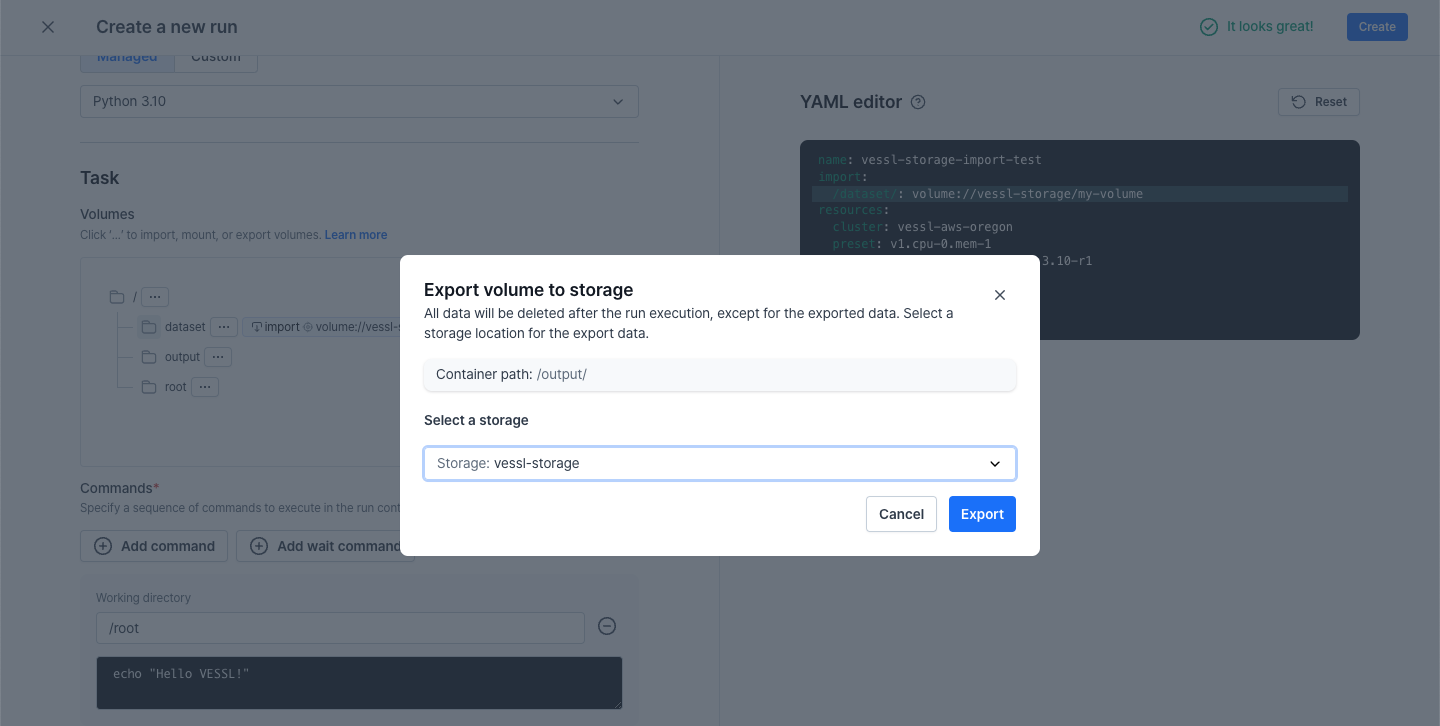
/output), and export to VESSL Storage as follows.
2
Locate the exported volume
Navigate to Run > Files to find the file tree of run execution.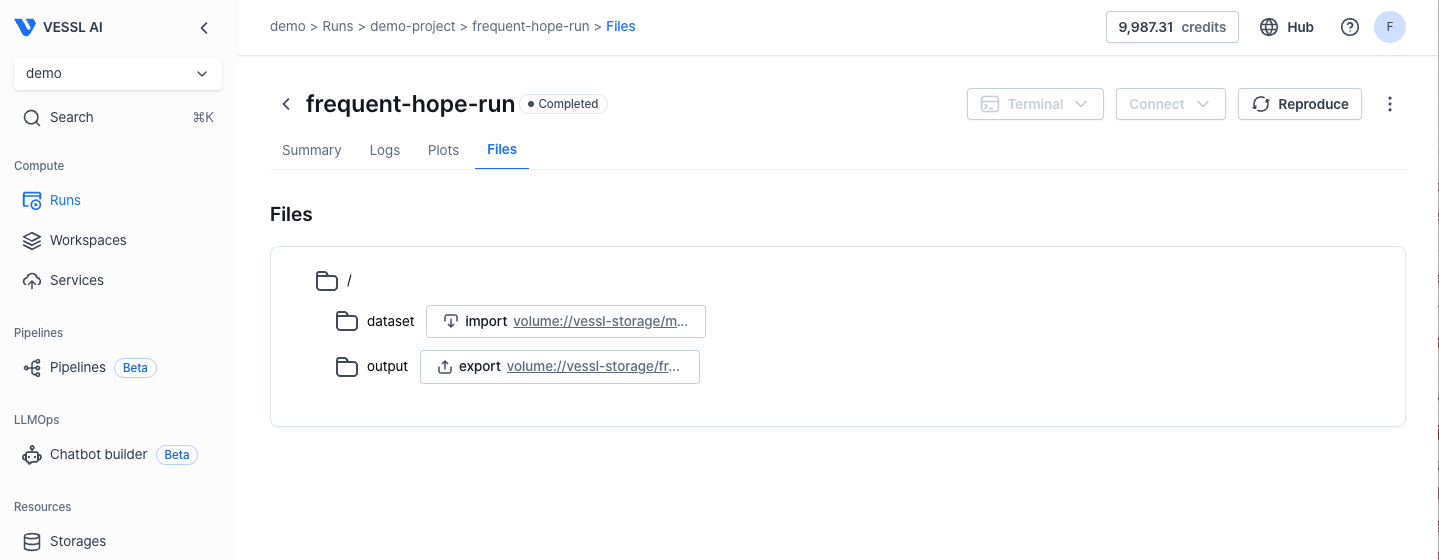

Tagging & Search
Whether your volume is user-generated or workload-generated, tagging allows for quick search and retrieval of data.